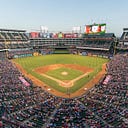The Tangible Benefits of Working the Count
Are there real, tangible benefits to working the count? Hitters who can “grind” and “make pitchers throw strikes” are so highly praised. But are hitters in high-pitch plate appearances really more successful than hitters in average plate appearances? Are there any tangible benefits to making a pitcher throw more pitches? Does it really tire pitchers out?
Here’s a table showing how hitters have fared so far in 2021 in PA’s with different numbers of pitches.
As you can see, as a general rule, the more pitches a hitter sees in an at-bat, the higher is OBP is going to be. But, as a hitter gets later into an at-bat, the number of bases a hitter is likely to gain in that plate appearance decreases, because the hitter is more likely to walk. To prove this, let’s take a look at the same table, but add a column for Walks per Plate Appearance. For our purposes, we are excluding intentional walks.
In general, as the number of pitches in the plate appearance increase, the more walks the hitter draws. This means less total bases for the hitter, and therefore a lower SLG. So, because there are trade-offs with certain numbers of pitches in a plate appearance, using OPS, (because it’s a basic way of combining on-base ability and power) we can weight each plate appearance with how much more it helps out the hitter than the average plate appearance. The average plate appearance lasts roughly 3.92 pitches. That would correspond to a .709 OPS, which is the league average OPS. So then, if we were to weight each plate appearance based on the expected OPS based on the number of pitches, this is what a weight for each number of pitches would look like.
Formula for the “Weight”: Expected OPS / .709
Below 1 is below-average expected OPS, and above 1 is above-average expected OPS.
So, there are definitely tangible benefits to the hitter based on the number of pitches you make the pitcher throw. Being aggressive on the first few pitches of the at-bat pays the most dividends, but if a hitter doesn’t take a rip at the first few pitches, hitters should try to work the count to at least seven pitches, preferably eight or more.
Using these weights, which hitters are the best at having effective plate appearances? We can figure this out by simply averaging the corresponding weights for each of their plate appearances. So, for example, if a hitter had three plate appearances, and two of them were five pitches and one of them was two pitches, his average weight would be 0.98, which means he is a slightly below-average hitter in terms of “having good at-bats” that positively affect him. Here are some examples of hitters today and their average plate appearance weights:
Tommy Edman, STL: 1.00
Vladimir Guerrero, Jr., TOR: 1.01
Whit Merrifield, KC: 1.03
Nick Solak, TEX: 0.97
These weights in the table above also tell us that the narrative that “working the count” or “grinding” for a long at-bat might be errant. A 10-pitch plate appearance in which a hitter worked the count full and fouled off 4 pitches is worse, in terms of expected OPS, than swinging at the first pitch.
In conclusion, there are tangible benefits to having a lot of plate appearances of a certain number of pitches. And these benefits (up to .191 points in OPS) likely far outweigh the benefits of “making the pitcher tire out”. Swinging at the first pitch, while maybe not making the pitcher tired, is a more guaranteed way of having a better chance of getting a hit.
Thanks for reading!
Stats from Baseball-Reference.
